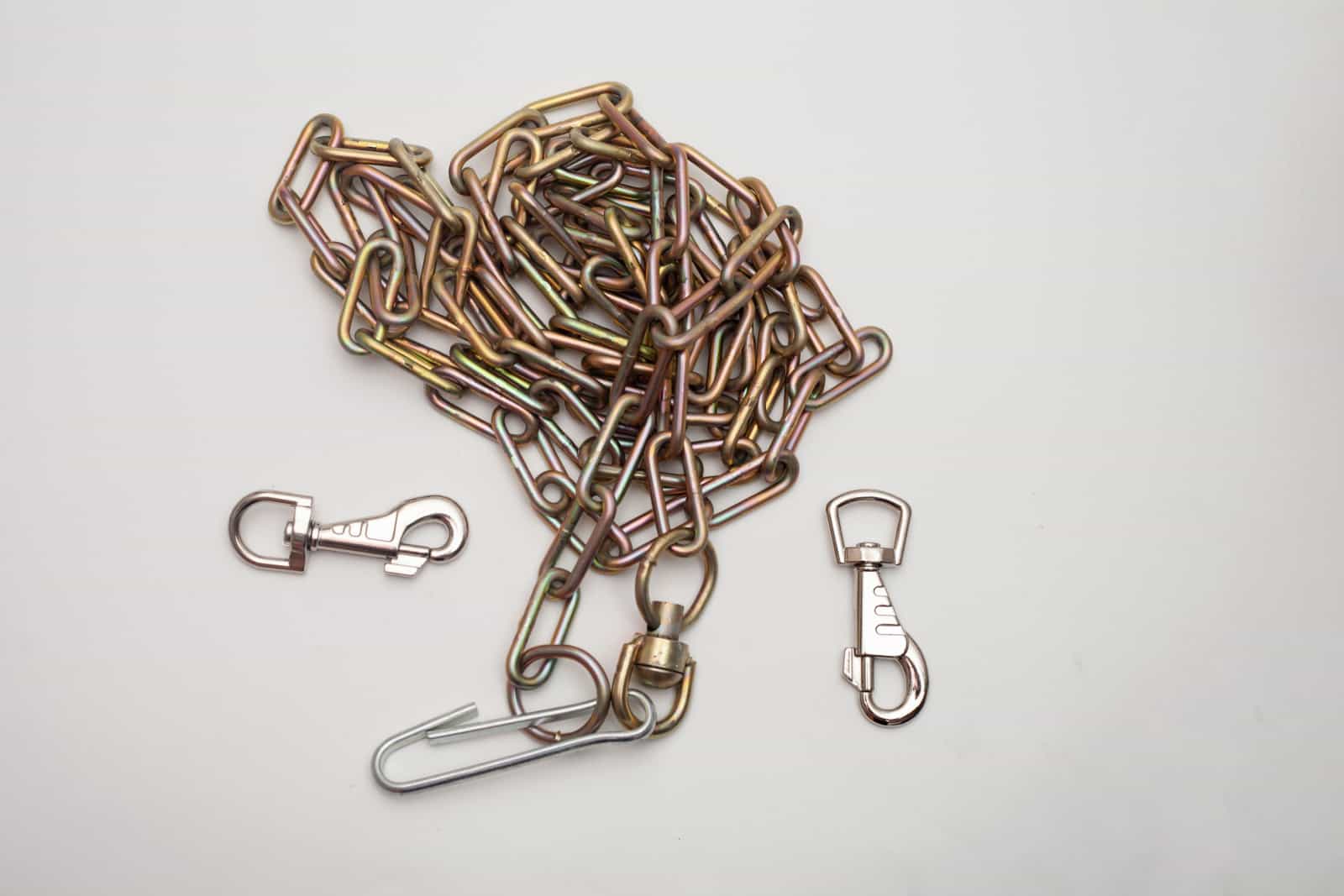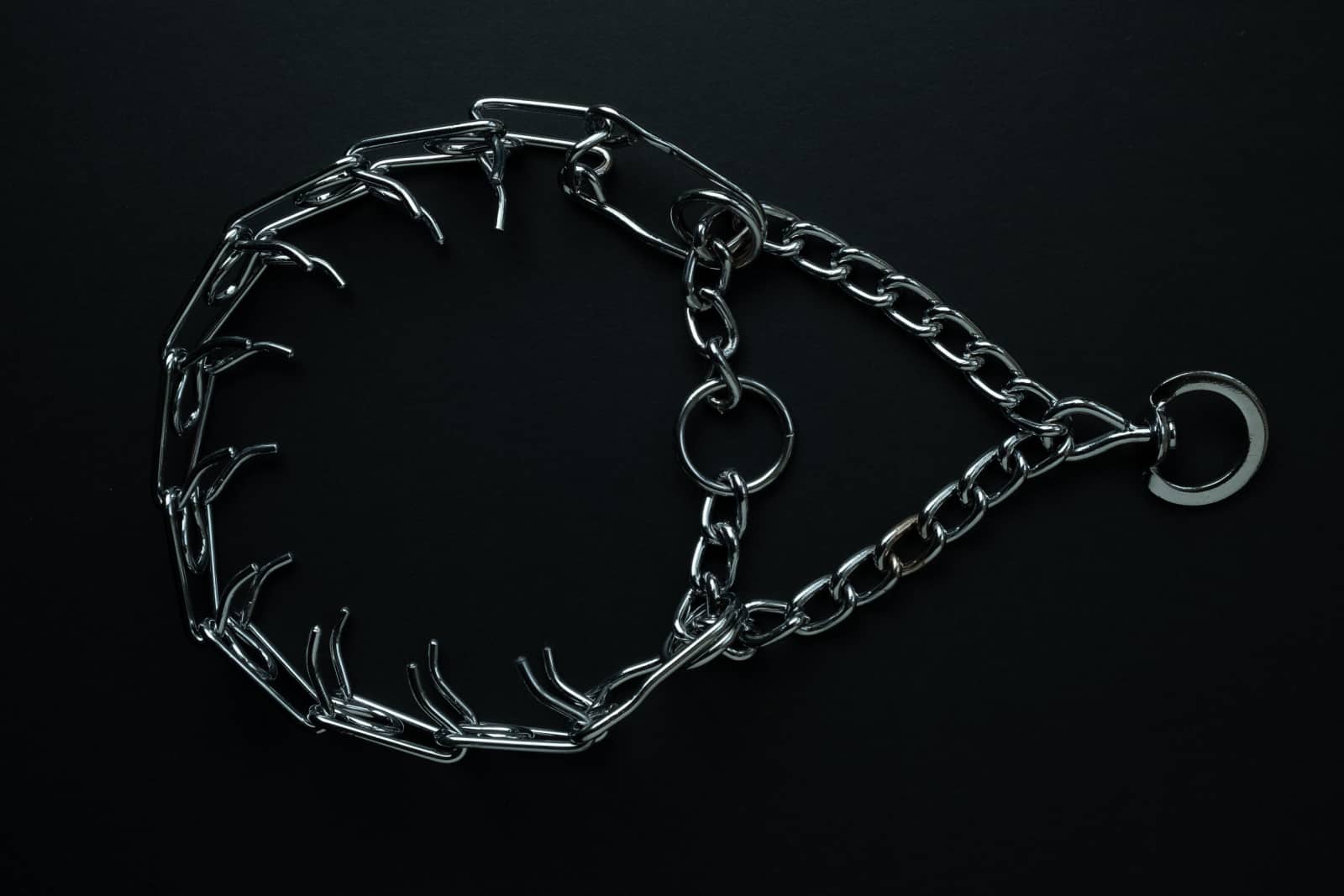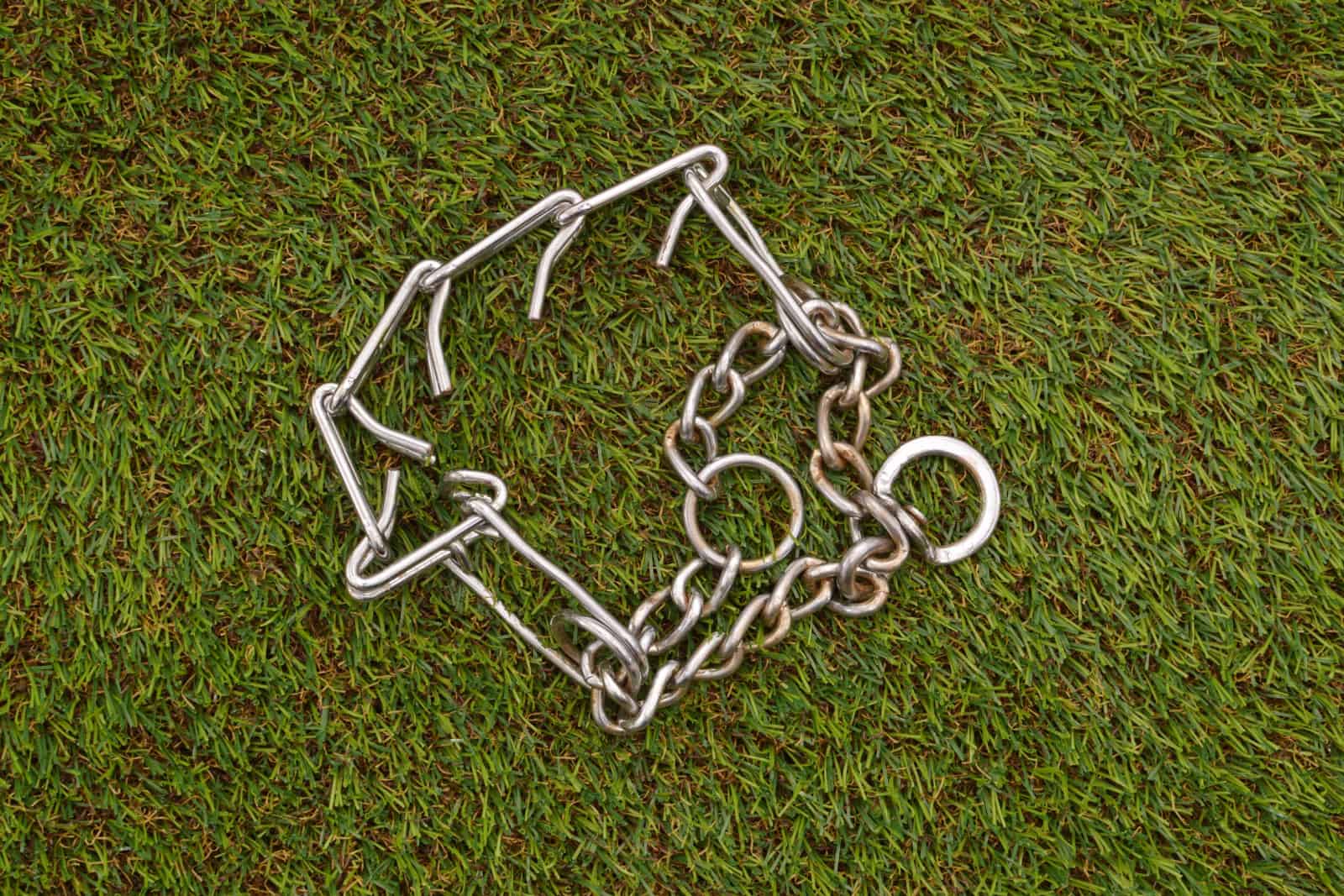Among corrective tools, the fur saver vs prong collar represents two direct competitors. While leash pulling does not necessarily require either, it can make life easier on both dog trainers and owners.
However, their use requires serious know-how to be used safely and effectively. Going out and buying a fur saver or prong collar will not guarantee positive results, but it can have negative consequences for your dog.
Join me in exploring the good and bad sides of both collars, and learn some neat tricks on how to appropriately use them.
One Is Slightly Better Than The Other

Comparing two products that have the same use, and almost identical results when used by professionals can be a tough task. Dog owners who want to go down the path of DIY should rethink their strategy, as this kind of tool requires professional guidance.
A fur saver does not have the dull-tipped protrusions like the prong collar. It was designed to entice dogs not to pull because they essentially self-correct by going in a direction opposite of where you are leading them.
On the other hand, the prong collar has these “spikes” that are supposed to act as teeth. Dogs communicate via body language, and a light press of the teeth into another dog’s neck means “stop doing that”.
Many dog owners and even trainers question whether physical corrections are necessary, and most people gasp at the sight of a pronged collar due to its “barbaric” design. However, looks can deceive, and soon you will see why.
So, how is one better than the other? Well, one is much less likely to cause serious injury to your dog’s larynx and trachea, while the other can do it in seconds. To put an end to the “mystery”, let me list the pros and cons of each.
Fur Savers Are Good For…

Many dog trainers believe that the fur saver is more beginner-friendly. There is some truth to it, as it does not require much effort for the dog to understand the correction, and it looks less menacing.
Another positive of the fur saver is that it does not require any special positioning to be effective. Since it works by constricting the dog’s neck, it can be put without adjustments. This means that people who are not professionals are ready to go in a matter of seconds.
Smaller dogs, or large dogs that have a low sensitivity threshold, can have a negative reaction to correction collars, so the fur saver is less aggressive in applying the pressure on the dog’s neck. A correction that is too sudden and painful can make dogs become unresponsive.
And Bad If…
Its ease of use and “self-correcting” design also carries some negative effects. If your dog often lunges into the opposite direction of your movement, the fur saver can constrict too much, causing damage to the dog’s throat and windpipe.
The extent of the damage might lead to a tracheal collapse, which can be fatal for many dogs or require euthanasia. If your dog makes weird breathing noises after a training session with the fur saver, maybe the throat sustained an injury.
You cannot use this collar for non-training purposes, as the hazard of the dog getting its leash caught into an object can make it choke to death. The fact that it has to be taken off means less time spent switching collars.
A fur saver requires you to learn how to use it. It can present a problem for disabled or elderly people because it works by applying constant pressure to correct the dog. Jerking the leash with a fur saver is not the correct way to use it, and you risk injuring your dog.
The Bad Things About Prong Collars

Some say that the learning curve with a prong collar used by beginners is much steeper than with a fur saver. I tend to agree to a certain extent. Getting it positioned right requires a dog trainer’s explanation. Positioned too low, it will not work as intended.
Inexperienced dog owners that do see negative effects of the prong collar on their dog usually use too much force on a dog that has high body sensitivity to corrective training with collars. Sometimes, the dog is simply sensitive to the prongs even if you do not overcorrect.
One con that both collars clearly share is that they have to be removed after training. The danger of dogs getting caught in a fence, brush, table, or any other object and damaging the soft tissue of the organs in the neck is very high.
Good Sides Of Prong Collars
Stubborn dogs and those with low sensitivity to correction benefit greatly from the prong collar, as it gets the message more clearly than a fur saver. Cane Corso dogs are known for their difficult behavior during training, so a prong collar is a great tool for large, rowdy breeds.
Even if you apply too much force, the prong collar is designed to remain loose and never fully constrict. This reduces the chance of hurting your dog to a minimum while needing very little effort to get the desired effect.
For elderly people, the prong collar provides a means to reduce the amount of resistance and pulling force from the dog, as the mechanism it is based on requires minimal force to apply a correction.
Final Word
While you might be still confused about which one is better, and contemplate on the fur saver vs prong collar debate, I think you should always consult a professional dog trainer before deciding to buy or use one of these.
It takes a second to injure or mentally traumatize your dog and create an aversion to both collars and training. Avoid this mistake by participating in training sessions with certified professionals. Trust me, they are worth the money.
For those of you who know your way around corrective training, I would advise using a prong collar because it has a much lower risk of injuring your dog. However, I still strongly suggest having a couple of training sessions with a trainer before doing it on your own.
